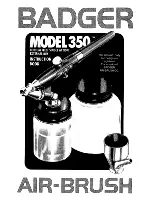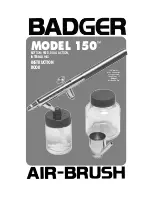
English
8
© Wagner Spray Tech - All Rights Reserved
Air and Material Controls
Spray performance will depend upon a number of
factors: material thickness, spray pattern selected,
material volume, and air pressure. With any type
of air-assisted spraying, desired spray results will
be achieved through some trial and error while
adjusting some or all of these variables.
Review these pages to learn about the spray controls
and how they can be used to acheive the desired
spray results.
Air Pressure Control Selector
The air pressure control dial adjusts the level of air
pressure produced by the turbine.
0 = OFF
1 = Thin materials
2 = Thick materials
• A high air pressure level (2) will result in a
smoother finish.
• A low air pressure level (1) will result in larger
drops of material being sprayed from the gun,
and will create a slightly rougher finish.
Tip: The thicker the material you are spraying, the
higher the turbine pressure you will need.
Tip: For fine-finish work with thinner materials, you
may want to use a low air pressure level. Spraying
a thinner material at high air pressure will result in
more overspray. Overspray is sprayed material that
does not stick to the spray surface and bounces
back.
Material Flow Adjustment
The material flow adjustment controls the amount
of spray material that is sprayed from the spray gun.
• For thicker materials, it is recommended that
you start with the highest material flow setting
and then gradually decrease the flow to suit
your particular spraying needs.
• For thinner materials, it is recommended that
you start with a low material flow setting, and
then gradually increase the flow to suit your
particular spraying needs.
• The higher the flow setting, the quicker you will
have to work in order to avoid drips and sags in
your spray pattern.
Set the material volume by turning the knob on the
trigger of the spray gun.
Tip: Spraying with the knob set too high will result
in a spray pattern that runs and sags (too much
material).
Tip: Spraying with the regulator set too low will
result in a spray pattern that does not cover (not
enough material).






































